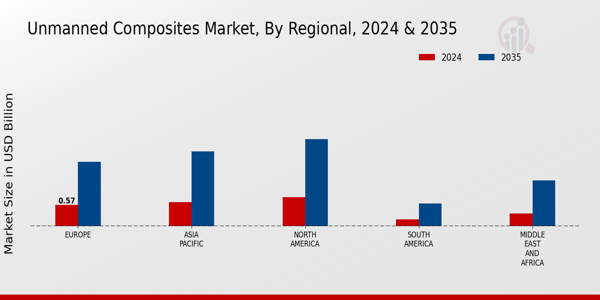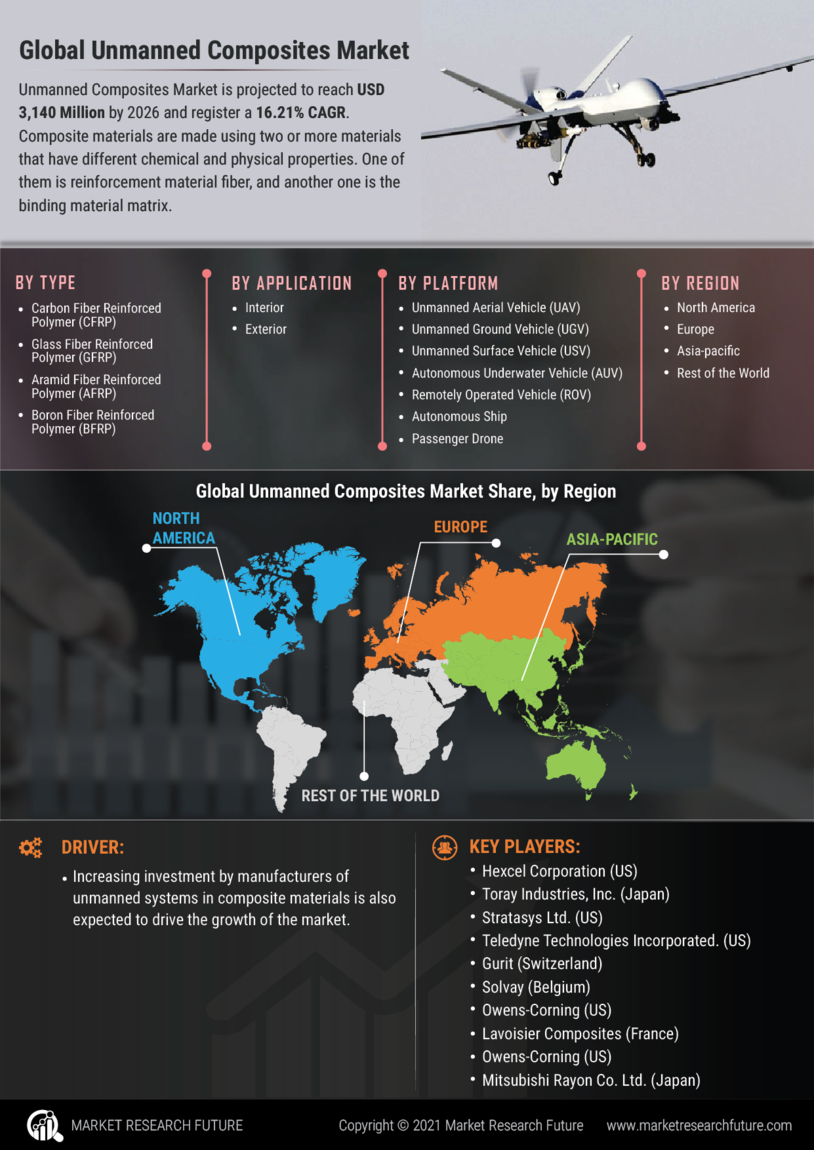
North America: Cloud Innovation Leader
The North American unmanned composites market is a significant segment of the global industry, driven by the increasing adoption of unmanned systems across various sectors, including defense, agriculture, and logistics. North America held a dominant share in the global unmanned composites market, attributed to substantial investments in defense and security, a robust technological and industrial base, and the growing use of unmanned systems in commercial applications such as logistics, environmental monitoring, and agriculture. The U.S. market is projected to grow fastest, driven by government initiatives and regulatory support aimed at integrating drones into various industries. This growth is expected to increase the demand for advanced composites, essential for manufacturing lightweight and high-strength unmanned vehicles that meet regulatory requirements. The market's expansion is further supported by the rising need for lightweight materials in unmanned systems, which enhances performance and durability. Composite materials, such as carbon fiber reinforced polymers (CFRP), are particularly favoured for their strength-to-weight ratio, making them ideal for applications in unmanned aerial vehicles (UAVs) and other unmanned platforms.
Europe: Emerging Cloud Market
The European unmanned composites market is experiencing significant growth, driven by the increasing demand for lightweight and durable materials in unmanned systems across various sectors, including aerospace, defense, and commercial applications. The market is also influenced by the growing emphasis on environmental regulations, which encourage the use of lightweight and fuel-efficient unmanned systems. The exterior application segment, encompassing components like fuselage, wings, and control surfaces, is expected to grow, as composite materials offer high strength and efficiency for these parts.
Asia-Pacific: Rapidly Growing Cloud Sector
The Asia Pacific unmanned composites market is growing rapidly, fueled by the rising demand for unmanned systems across various industries, including defense, aerospace, and automotive. Composites, such as carbon fiber and glass fiber, are increasingly used to reduce weight and enhance performance. The market benefits from technological advancements, fuel efficiency requirements, and environmental regulations. The demand for composites in unmanned systems' interiors is also expanding, with the region, particularly China, India, and Japan investing heavily in the development of advanced technologies, including the deployment of unmanned systems for various applications, thereby driving the need for high-performance composite materials.
Middle East and Africa: Emerging Cloud Frontier
The Middle East and Africa unmanned composites market is expanding as unmanned systems gain traction in sectors such as defense, oil and gas, and surveillance. The region's focus on improving defense capabilities and diversifying its technological landscape is driving the demand for lightweight and durable composite materials like carbon fiber and fiberglass. Additionally, the growing emphasis on energy efficiency, particularly in remote oil and gas operations, is boosting the need for advanced unmanned systems. The market is expected to grow as countries like the UAE, Saudi Arabia, and South Africa continue to invest in unmanned technology and infrastructure development.


















